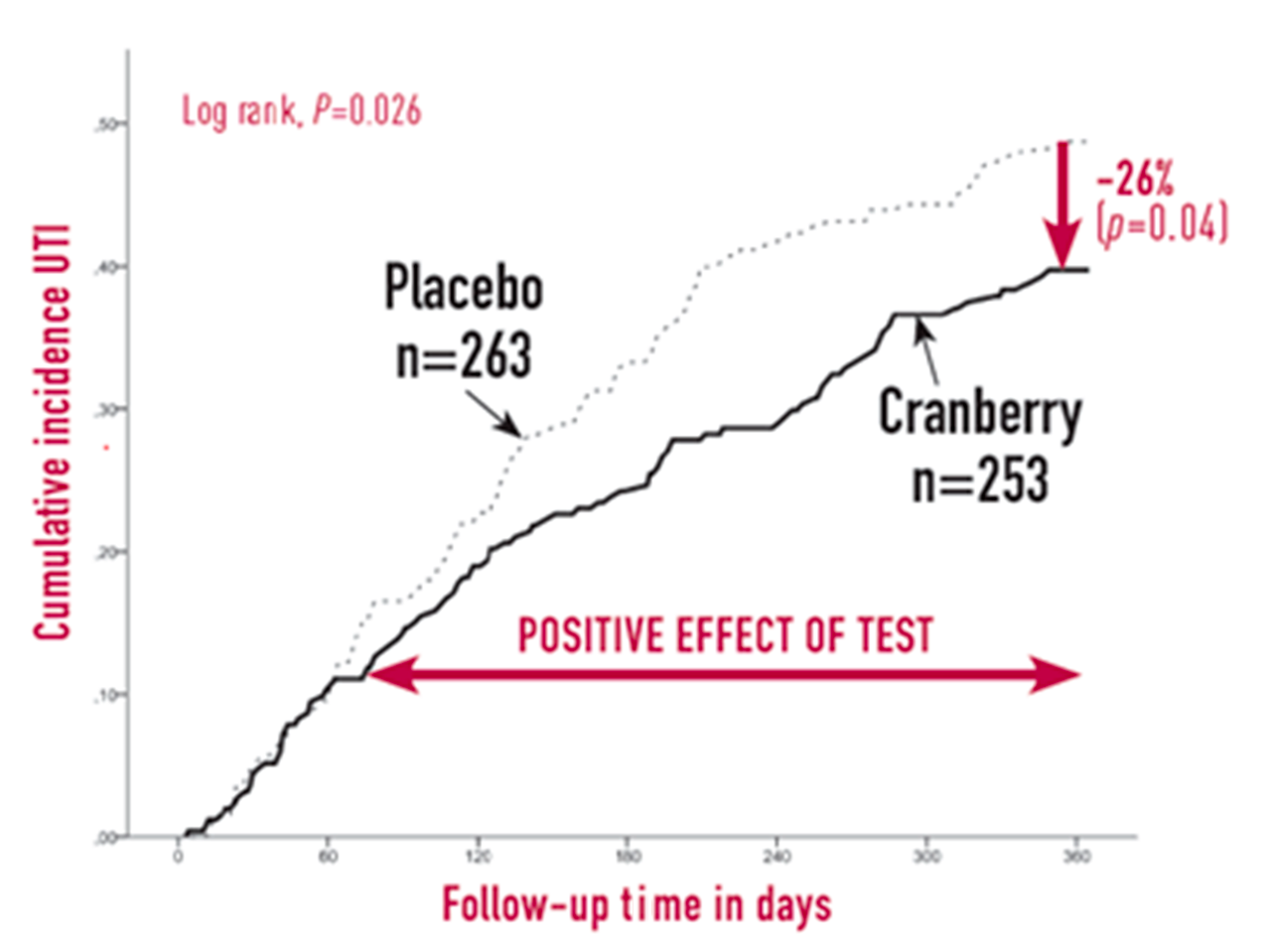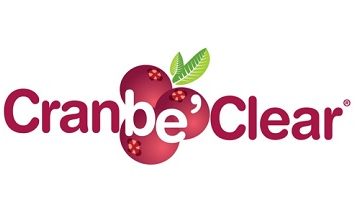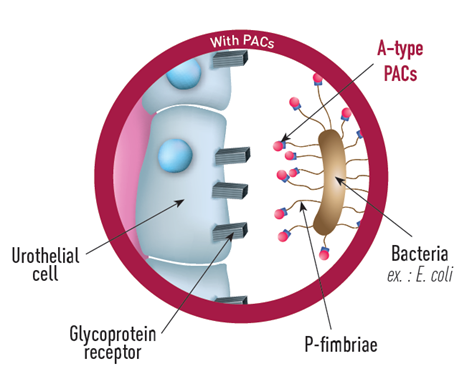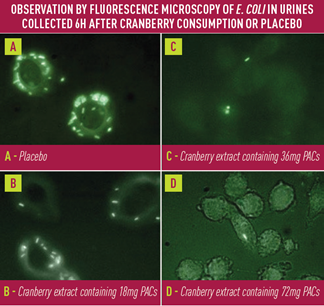All the lightness of a perfect intimate comfort
Cranbe’Clear®, cranberry extract for urinary tract health
Cranbe’Clear® is made from cranberry extract (Vaccinium macrocarpon Aiton). It naturally contains 20% proanthocyanidins (PACs), measured using the specific, enhanced
BL-DMAC method. It is particularly suitable for food supplements.
This wonderful little red berry, native to North America, is an excellent ally for women’s health. It is increasingly popular in Europe, particularly among women.
The cranberry has the particularity to contain proanthocyanidins of type A. These PACS have an inhibitory effect on the adhesion of certain bacteria to urinary epithelial cells, thus reducing the prevalence of urinary tract infections, particularly E. coli.1-2
Our intestinal microbiota is composed of billions of bacteria, viruses and fungi that are essential to the proper functioning of the body. The E. coli bacteria is naturally present there and is harmless. When it migrates to the bladder, it can cause urinary discomfort.
Cranbe’Clear® helps reduce the adhesion of E. coli bacteria to the cells of the urinary tract, which is a risk factor for urinary tract infections..
What is the effective dose to benefit from the effects of Cranbe’Clear®?
Based on clinical studies, ANSES determined that a dose of 36mg of PACs/day from cranberries inhibited the adherence of certain bacteria (mainly E. coli) to the urinary mucosa. Consequently, it also validated BL-DMAC as the benchmark method to confirm this dose.
- 100mg of Cranbe’Clear® contains at least 20mg of PACs per dosage with the benchmark method: BL-DMAC (i.e. 180mg to obtain a dose of 36mg of PACs)
BL-DMAC: the benchmark analysis method
Several methods exist for dosing PACs but the results vary from one method to another.
BL-DMAC is a reliable, fast and very accurate method. Moreover, five international laboratories have validated it3 and published an article about it in the Journal of the Science of Food and Agriculture. It is thus confirmed as the benchmark method for measuring PAC content.
Using such a method inspires confidence. It guarantees well-dosed products and therefore efficacy for the end consumer.
- The laboratory used by Pharmanager Ingredients to carry out controls on Cranbe’Clear® is one of the international laboratories that validated this method.
Studies on the effects of cranberry on the incidence of urinary tract infections
Howell AB et al. study 20104
A multi-centre study evaluated the effect of cranberry supplementation containing different doses of PACs (18, 36 and 72 mg PACs/day) on the anti-adherence activity of E. coli in 32 healthy women with no urinary tract infection at the time of selection (study conducted in Japan, Hungary, Spain and France).
The first results showed significant anti-adherence activity in the urine collected from volunteers who had taken cranberry compared to the placebo (p<0.001). In addition, the results of measurement of the adherence index on epithelial cells (cf. figure below) showed that after supplementation with cranberry at a dose of 36 or 72 mg of PACs, the adherence index of the bacteria is significantly lower than when the supplement was titrated to 18 mg PACs.
.
Thus, 36 mg PACs/day provides optimal anti-adhesive activity to limit bacterial adhesion to urethral wall cells.
Caljouw et al. study 20145
Dutch researchers conducted a multi-centre study on 516 women to observe the effect of a daily intake of cranberry containing 18mg of PACs/day for a year. At inclusion, subjects were healthy but had a low to high risk of UTI.
The results revealed that a daily intake of cranberry at only 18 mg PACs/day reduced the incidence of urinary tract infections by 26%.

Cranbe’Clear® summary
- Suitable for your formulas (liquid, capsule, tablet, powder, gummies, ….)
- Suitable for vegans
- Free from nanomaterials (Regulation 1169/2011)
- Raw material origin : Canada
- Comprehensive information files on Annex II and Annex III
- 180mg of Cranbe’Clear® allows you to obtain a dose of 36mg of PACs

- Ermel G, Georgeault S, Inisan C, Besnard M. J Med Food. 2012;15(2):126-34.
- Liu Y, Black MA, Caron L and Camesano TA. Biotechnol Bioeng 93:297 (2006).
- Prior R. et al. Journal of the Science of Food and Agriculture, vol 90, Issue 9. 21 april 2010. http://www.dmac-asso.org/
- Howell AB, Botto H, Combescure C et al. BMC Infect Dis 2010;10:94.
- Caljouw et al. JAGS 62:103–110, 2014
 All of our references
All of our references
To learn more, contact us !



